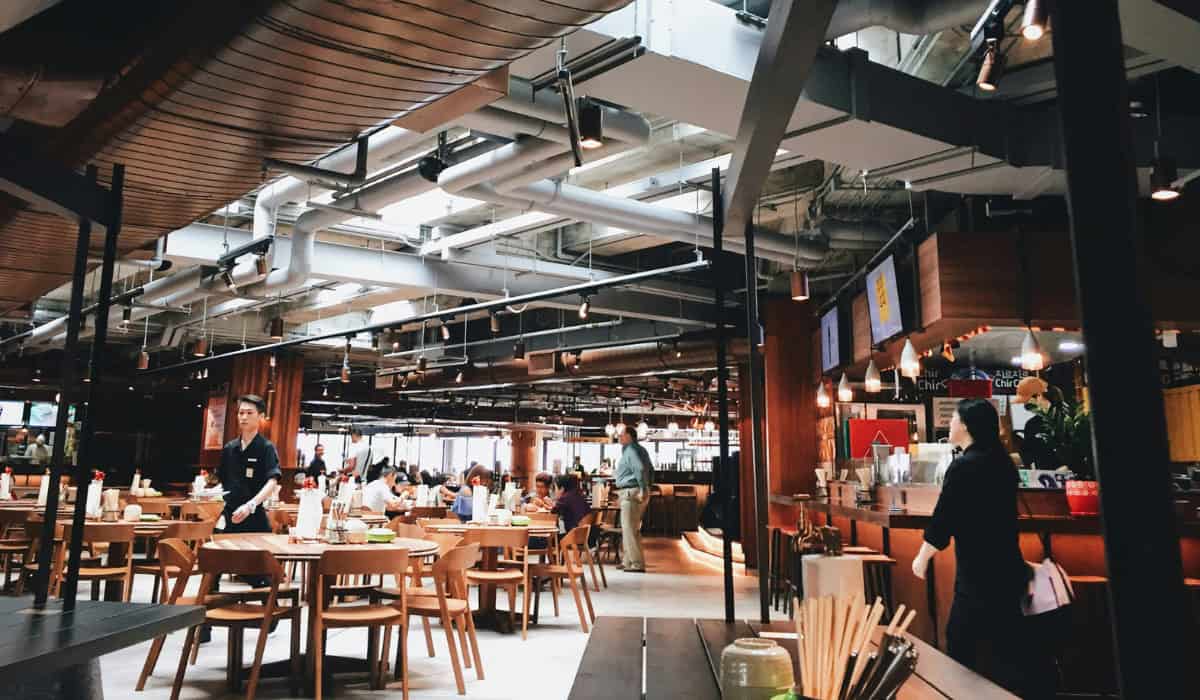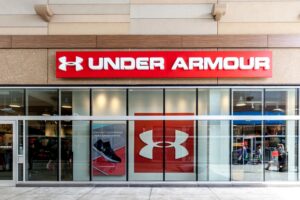
Photo by Geraldine Lewa on Unsplash
September 18, 2024
Are Grocerants the Future of Supermarkets?
Amid rising regulatory pressures and a surge in theft, U.S. grocery chains are navigating a tough market in 2024. Consumers are tightening their spending, and grocery issues are getting political as inflation has increased food prices.
As a result, grocers are forced to push their businesses in order to remain viable and competitive in this demanding environment.
One strategy that seems to be making a resurgence is in-store dining.
Referred to as a “grocerant,” a hybrid term for the words “grocery” and “restaurant,” this idea originally described the concept of grocery stores providing in-store dining options and ready-to-eat or easy-to-heat prepared meals. The approach was often called “food service at grocery stores,” and it sought to reengage customers by stepping into the restaurant space, according to NorthStar.
More recently, however, this concept has “metamorphosed into a far-reaching trend” that now involves selling retail food items intended to be eaten immediately.
According to The Food Institute, grocerants have seen a major revival. Many supermarkets had previously expanded their food courts and dining areas to attract customers and increase revenue. This shift is highlighted by 2018 data from Supermarket News, which noted that while some retail spending had shifted online, dining-out expenditures had surged. In the U.S. at the time, spending on dining out surpassed grocery spending, transitioning the economy from retail-driven to more experience-driven, where foodservice became a new focal point — fueling the rise of grocerants.
However, the pandemic forced many of these dining areas to close, temporarily halting their growth. Now that things have returned to a new normal, grocers have started to revisit the strategy again, though with a “twist” this time.
As reported by The Food Institute, “Rather than focusing on extravagant dining spaces, they are now emphasizing value meals that compete directly with fast-food and takeout options. This shift reflects a broader trend towards offering affordable, convenient meals that cater to consumers facing tighter budgets.”
On the outlet’s podcast, CEO of SupermarketGuru, Phil Lempert, said, “So I think what we’re going to see…with all the fast-food restaurants pushing these $5 meals, I think we’re going to see the same thing happen in supermarkets, and they’re going to have to. It’s going to have to turn away from just having a gourmet meal into a value meal as well.”
Food equipment company Hess emphasized that soaring costs due to rising inflation have made dining out less affordable, leading consumers to look for budget-friendly yet high-quality dining experiences elsewhere when food in their fridge doesn’t appeal to them. Many are now finding these options at their local grocery stores. According to the company, “Supermarkets across the Midwest and all over the U.S. are upping their game to meet the demand for delicious — and economical — meals.” Traditional grocery stores are transforming into “a new culinary experience,” offering in-store dining, a wide variety of prepared foods, and exclusive private-label brands.
Furthermore, grocerants are becoming increasingly popular as they cater to the modern consumer’s demand for convenience, allowing shoppers to easily pick up groceries, enjoy a meal, or find one to take home all in one location. This one-stop-shop experience not only meets the needs of busy individuals but also boosts foot traffic and combined revenue for grocers. By offering cooked and pre-cooked food options, grocerants attract a broader customer base and incite the chance for cross-sales between customers who originally went to the grocery store with the intention of just buying groceries or dining in.
Discussion Questions
What impact will the resurgence of grocerants have on traditional grocery shopping habits?
Do you see grocerants as a trend that will continue to grow, or is it more of a temporary response to current economic pressures?
What challenges do you think grocers face when shifting focus from grocery-only sales to incorporating restaurant-style dining?
Poll
BrainTrust
Jeff Sward
Founding Partner, Merchandising Metrics
Gwen Morrison
Partner, Candezent & Retail Cities Consultant
Jeff Hall
President, Second To None
Recent Discussions







When it comes to a full-service restaurant experience, very few supermarkets can support such a concept. I mean, who’d really want to have a nice meal in a Kroger? It is far too functional an environment! There are some, of course, that can push the boundaries. Wegmans has some more middle-market restaurant concepts in its stores. In Foodland’s flagship store in Honolulu there is an upscale dining concept called Eleven. However, these are foodie-focused retailers, and they’re more experiential by nature. That said, fast and casual food concepts can have more success in grocery stores as these are more focused on convenience. We’re seeing more moves here as it’s a nice complementary revenue stream.
It’s a concept that succeeded in the Food Halls of high- experience Deparment stores but has struggled in US grocery.
Why? The ambiance just isn’t there.
True, but there are a few notable exceptions. A pre-pandemic visit to the two-story Wegman’s in Fairfax, VA comes to mind. An immense salad bar and hot table array with a seating area well-separated from the sales floor. Then there’s the tiny wine-bar wedged into our local Whole Foods.
To your point, even the best-executed grocerants are cafeteria-style, not table service like the tea-sandwich restaurants in the old flagship department stores.
Supermarkets may envy the margins possible from selling prepared foods for on-site consumption, but nobody wants to sit and eat across from the cash-registers.
Fun – and attention getting – as this may be, I don’t see hybrid market/restaurants as being any kind of big force; the reason is simple: very, very few markets are designed – or more importantly could be redesigned/rebuilt – to handle this type of service. Sitting in the middle of a strip mall-super to have dinner isn’t going to whet anybody’s appetite.
Fine dining it’s not, but there is absolutely a market of people who want a fresh deli sandwich, hot from the fryer boneless wings, or a salad that are either spending their money for lunch in your grocery store, or at the Subway or Wingstop at the other end of the strip mall. Better to keep the customer and their dollars in your establishment.
There was a brief moment prior to the pandemic when Kroger and other supermarkets were introducing the concept of the “groceraunt” to the states. While there was some initial intrigue with the Kroger Kitchen 1883, and other innovative concepts, the onset of the pandemic put an abrubt stop to any momentum in groceraunts becoming a viable business model.
The grocery shopping experience has become far too transactional in nature, where the stores are now focusing on pure transactions, product fulfillment, and efficiency rather than driving unique customer experiences. Additionally, most of the grocery investments have been made around mitigating the last mile of fulfillment, staffing up for BOPIS, store delivery, and curbside pickup.
The current grocery operating model isn’t one where the groceraunt has a sustainable and profitable future. However, there are critical areas of opportunity to address the rapidly changing consumer behaviors and drive four-wall innovation initiatives, including:
As local market conditions change, prices go up and maybe a few restaurants close down, select grocery stores may be able to take advantage of offering lunch, dinner or even a bar inside a supermarket. However, it doesn’t seem to be a resurgence. Three different concepts stand out in San Diego where it has worked:
1) Whole Foods Market in La Jolla- A localized bar called Torrey Pints sits within a bustling Whole Foods where you can buy sandwiches, Pizza and other meals while enjoying a local microbrew or cider. It has been there for several years, and it works.
2) Northgate Market in Barrio Logan- A traditional Hispanic focused supermarket with a prepared food section called Fonda de Dona Tina. Great tasting Mexican Food at a great value with spacious outdoor seating and enough room to bring your family.
3) Ocean Beach’s People’s Food Coop- 100% Vegetarian Grocery Store that started in 1971, that serves a very specific clientele. Their in-house deli and bakery only serve Vegan items but has restaurant seating.
What’s common among these three is that customers keep returning for a specific reason, whether type of food or atmosphere. This special and local reason is hard to replicate and develop across 1000’s of stores.
Good examples noted that this can be done the right way in a grocery store. Decent quality ingredients and focus plays a key role in making it work.
While there are certainly some strong examples of in-store restaurant concepts, this is the exception rather than the rule. At the same time, more casual and fast food offerings are more the norm, and likely more sustainable.
As witnessed pre-pandemic and again now in the resurgence of the grocerant concept, it is an extremely small segment of grocery retailers who have the brand strategy, space and investment appetite it takes to build out a dedicated sit-down restaurant environment, regardless of it being full-service, quick-serve or hybrid.
The pure grocerant approach does align well for operators already offering an elevated experiential retail environment, resulting in a higher frequency of customer visits, while enabling the grocer to capture a greater share of wallet and competing against alternative meal/dining options.
Where we will see continued expansion is in the prepared meals, meal kits and meal takeaway offerings, given these initiatives are much more adjacent to and a natural extension of the traditional supermarket environment – without having to take it to the level of restaurant-style dining.
The restaurant part is new, but the tables for people eating prepared foods is not. There is too much competition out there for this to turn into a true “thing”. Personally when I see people eating from the hot bar at a Whole Foods or wherever it leans predominantly towards single people or families shoving a piece of pizza down with the shopping cart full of food that they just bought right next to the table. In short, a depressing scene.
As for upside or a change in this trend I strongly agree with Neil-are you really going to go on a date at Kroger or Publix?
My guess is no.
Grocerants will never be confused with fine dining, but as an alternative to fast food, I think the concept is brilliant. OK, so it’s not a restaurant, but neither is the local burger or burrito drive thru. The dining area at my local Whole Foods always busy…always. It’s bare bones tables and chairs, but a lot of people seem to think that’s just fine. And the range of choices available to a couple or a group certainly is better than the burger joint. (I still love you, Five Guys.) And done correctly, the concept can offer the grocery customer new ideas and insights for home preparation. To me, the grocerant is an experiential step up from a quick trip to the grocery store. And I can keep my expectations in line for what a grocerant can really deliver on.
Few want to eat in a chain store, and the odds are slim gaining traction. But for grocers with better quality food and more variety, this can work. The odds of success are higher with an internal team focused on good cuisine or a partnership with a trusted local chef. One example is Seattle-area grocer Town & Country Markets, at Field House. The partnership with restauranter and chef Ethan Stowell features items like American Wagyu Cheeseburger, Truffle Fries, Garden Panzanella Salad, Smoked Brisket and much more, offered at decent prices.
Customers who try dining at a grocery store will be programmed to expect a traditional restaurant usually tastes better and has a little better ambience. But if the grocer offers near as good quality at lower prices, they’ll embrace this value. Marketed correctly it saves time, money, and connects customers to the grocers brand of freshness and quality.
Take out absolutely, eat in store – not as much. Good quality Food court’s inside a Grocery Store are commonplace in many countries, although I’m not sure how much of the food is consumed in store, vs taken home. Anything that gets a customer to walk into a grocery store and contribute some profit pennies is a good thing. One has to wonder if Covid hadn’t happened would grocers ever have offered BOPIP (buy online pickup in the parking lot) as opposed to trying to get the shopper to at least walk into the store to pick up their order and hopefully buy some more.
Doing prepared food well and profitably is not for the timid.
A supermarket that partners with local restaurants can satisfy the food quality requirement but will miss on meal value. It’s just another location for the restaurant.
A supermarket offering a hot and cold bar may or may not satisfy meal value but will usually miss on food quality. A tough balancing act to get right.
On a personal note, it has always been frustrating when doing store visits to be in these buildings full of food yet have to visit elsewhere to grab a decent lunch. There are exceptions and things have improved but with the caveats noted above.